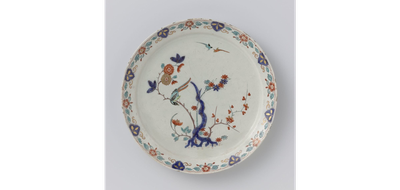Chinoise faience
erstellt von
—
last modified
2023-10-02T11:47:18+02:00
Rijksmuseum Amsterdam, public domain
Contributors: De Grieksche A pottery factory
Rijksmuseum Amsterdam, public domain
Bord, het plat beschilderd met bloeiende takken en vogels, ceramics, ca. 1722–1757, manufacturer: De Grieksche A pottery factory; image source: Rijksmuseum Amsterdam, http://hdl.handle.net/10934/RM0001.COLLECT.234139, public domain.

